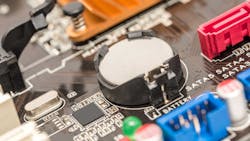How to Prepare for Battery-Cell Discharge Testing to Low Voltage (Download)
When discharging battery cells, it’s sometimes desirable to discharge the cells to a low voltage. Under normal operation, care must be taken to prevent discharging the cell below the safe operating voltage of the cell. However, when testing cells, the purpose of the test may be to characterize cell behavior when pushed below normal operating voltages.
In this article, I will focus on lithium-ion cells whenever I use examples of voltage thresholds, but the challenges and solutions to low-voltage testing are the same—independent of the cell chemistry.
Referring to my example of a lithium-ion cell, the minimum discharge voltage is when the open-circuit voltage (OCV) of the cell hits the voltage associated with 0% state of charge (SoC). While the minimum OCV of each lithium-ion chemical formulation, such as iron phosphate or nickel manganese cobalt, is different, this number is typically in the 2.5-V range. Some chemistries can go down to 2 V or even lower.
